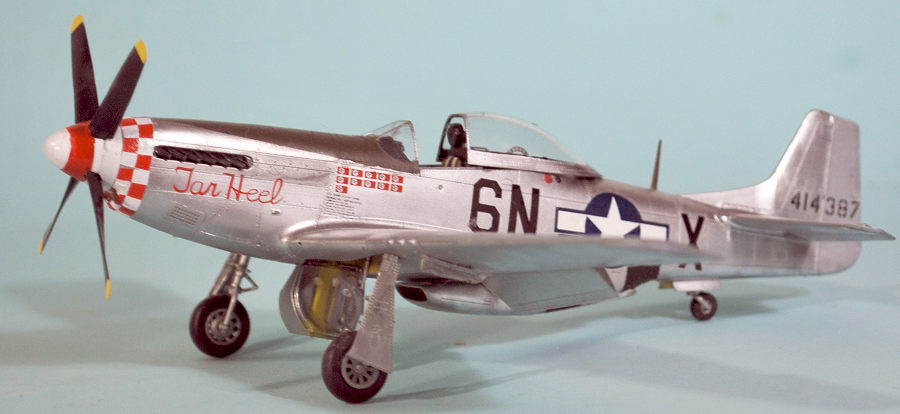
Eduard 1/48 P-51D Mustang
| KIT #: | 84184 |
| PRICE: | $39.95 |
| DECALS: | Four options |
| REVIEWER: | Tom Cleaver |
| NOTES: | Weekend Edition. Superscale 48-498 decals |

| HISTORY |
Bert Stiles:
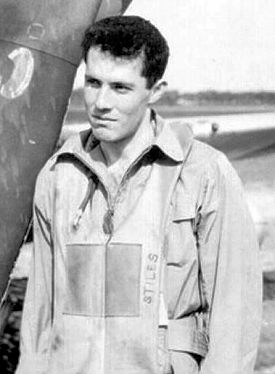 Bert Stiles is
the most famous author to graduate from South Denver High School, having written
“Serenade to the Big Bird,” one of the true classics of Second World War
literature. I’m the only other writer who graduated from that school. Bert was a
big part of my childhood. My mother had known him before the war, and his family
lived around the corner and down the street from us, in the 1200 block of South
York Street. From age 6 to age 13, I took piano lessons from his mother, who
once allowed me to see his room - unchanged from the way he left it in September
1944 to return to the war in Europe - after I performed well in a recital. I
used to look up at the big brass plaque with the names of all the school
graduates who died in World War II and think to myself I wanted to be like him,
which may have a great deal to do with me being the only other writer to
graduate from the school (that I am aware of).
Bert Stiles is
the most famous author to graduate from South Denver High School, having written
“Serenade to the Big Bird,” one of the true classics of Second World War
literature. I’m the only other writer who graduated from that school. Bert was a
big part of my childhood. My mother had known him before the war, and his family
lived around the corner and down the street from us, in the 1200 block of South
York Street. From age 6 to age 13, I took piano lessons from his mother, who
once allowed me to see his room - unchanged from the way he left it in September
1944 to return to the war in Europe - after I performed well in a recital. I
used to look up at the big brass plaque with the names of all the school
graduates who died in World War II and think to myself I wanted to be like him,
which may have a great deal to do with me being the only other writer to
graduate from the school (that I am aware of).
I recently noticed a comment at another modeling discussion board about SuperScale having done the decals for P-51D-10 “Tar Heel” of the 505th fighter Squadron of the 339th Fighter Group, assigned to Captain James R. Starnes, which was the airplane Bert was flying when he died in the crash of that airplane while pursuing a German fighter on Novmber 26, 1944. I went right over to the SuperScale website and bought the last sheet available.
At the end of March, 1944, a replacement crew flew their B-17 to Bassingbourn, with orders to join the 401st Bomb Squadron of the 91st Bomb Group. Their co-pilot, who freely admitted he was “not among the best,” was a 23-year old drop-out from Colorado College, where he had been a fraternity brother to the crew’s pilot, 1st Lieutenant Sam Newton. Bert Stiles aspired to a career as a writer, and the Saturday Evening Post had published four of his short stories about life as a forest ranger in Estes Park, with a few others picked up by Liberty and The American magazines; he wrote of Newton, “Neither of us did very much except play around at school before we went to the cadets.” The crew had been assembled in the Second Air Force combat crew pool at Salt Lake City. Stiles recalled, “It was the purest luck we ran across each other in Salt Lake City.” Newton later said of Stiles, “He should have been a war correspondent; he would have been another Ernie Pyle.”
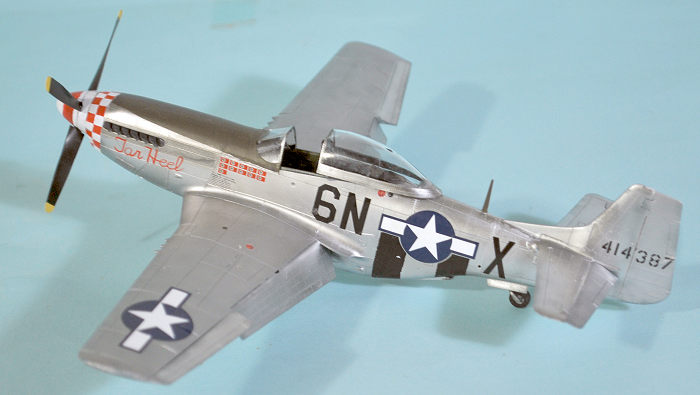 Stiles
completed his 30-mission tour with the 401st at the end of August. He turned
down an assignment at Lowry Army Air Field in Denver as a flight instructor, and
volunteered for a second tour as a fighter pilot. After conversion training, he
went to the 339th group’s 505th fighter squadron in October 1944.
Stiles
completed his 30-mission tour with the 401st at the end of August. He turned
down an assignment at Lowry Army Air Field in Denver as a flight instructor, and
volunteered for a second tour as a fighter pilot. After conversion training, he
went to the 339th group’s 505th fighter squadron in October 1944.
On November 26, the Eighth went after synthetic oil plants in Hanover, which were defended by 400 German fighters. The 339th group was escorting B-24s of the 2nd Air Division when they caught a gaggle of 40-60 Fw-190s from I/JG 301 at 24,000 feet just east of Hannover. Second Lieutenant Jack Daniel, flying his first mission, shot down five to become an “ace in a day.” The group claimed 29 shot victories in a battle that ranged from 24,000 feet to the ground, for one loss. That loss was Bert Stiles.
The escort to Hanover was Bert’s sixteenth mission, He was seen to shoot down one Fw-190 and was last seen chasing another. Both planes slammed into the foothills of the Deister ridge line near the town of Springe, southwest of Hanover. Apparently he became disoriented in the low-level fight and crashed due to target fixation. He was three months past his 24th birthday. He was flying “Tar Heel,” his flight leader’s Mustang, while Captain Starnes was on leave in London.
Among the personal effects returned to his mother in Denver was the typewritten manuscript of a memoir he had composed while with the 401st. First published in 1947, “Serenade to the Big Bird” is still in print, considered on of the finest memoirs by an Eighth Air Force crewman.
| THE KIT |
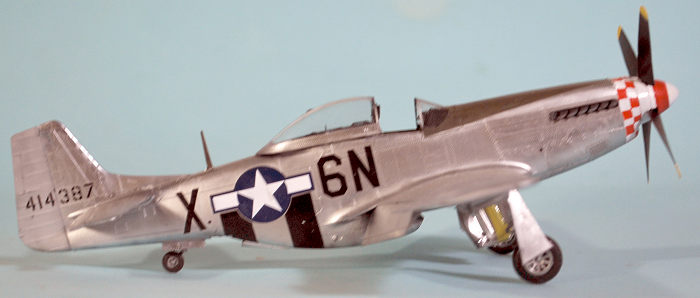 Educard’s
P-51D-10 Mustang Weekend Edition Kit is a 2022 re-release with different decals.
Educard’s
P-51D-10 Mustang Weekend Edition Kit is a 2022 re-release with different decals.
The four markings included are: “KatyDid,” the Mustang flown by LCOL Elwyn G.Righetti CO of the 55th Fighter Group - known as “The Strafing King” he was the highest-scoring VIII Fighter Command pilot for “ground kills”; “Man O’ War,” the P-51D flown by Col. Claiborne Kinnard during his short and unsuccessful tour as CO of the 4th Fighter Group, succeeding Don Blakeslee; “Moonbeam McSwine” the P-51D Bill Whisner flew in at “The Battle of Y-29" on New Year’s Day 1945; and “Missouri Armada” flown by Capt John B. England of the 357th Fighter Group. None of these have been “done to death” previously.
As a weekend kit, it includes only the plastic parts and the decal sheet; the cockpit photo-etch is available separately.
| CONSTRUCTION |
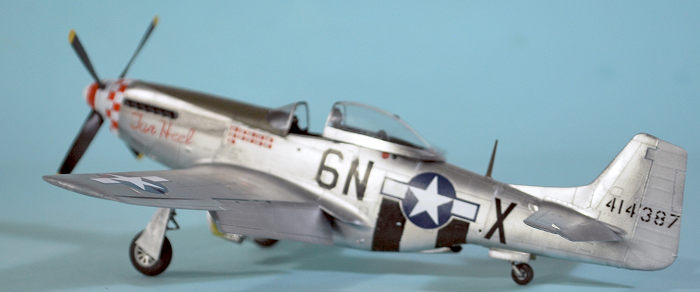 Building
this kit achieved two goals: I now have a personal memorial to a writer who has
always influenced me, and the project gave me another opportunity to test out
ways to use the new(ish) Mr Hobby and Tamiya lacquer-base super metallic paints.
Building
this kit achieved two goals: I now have a personal memorial to a writer who has
always influenced me, and the project gave me another opportunity to test out
ways to use the new(ish) Mr Hobby and Tamiya lacquer-base super metallic paints.
I assembled the kit in accordance with all the shortcuts I have outlined in the many other reviews I have written about the Eduard P-51Ds. Once you know the quirks of the kit, it’s easy for those of us who believe there’s no such thing as “too many P-51s” to get a good assembly result.
| COLORS & MARKINGS |
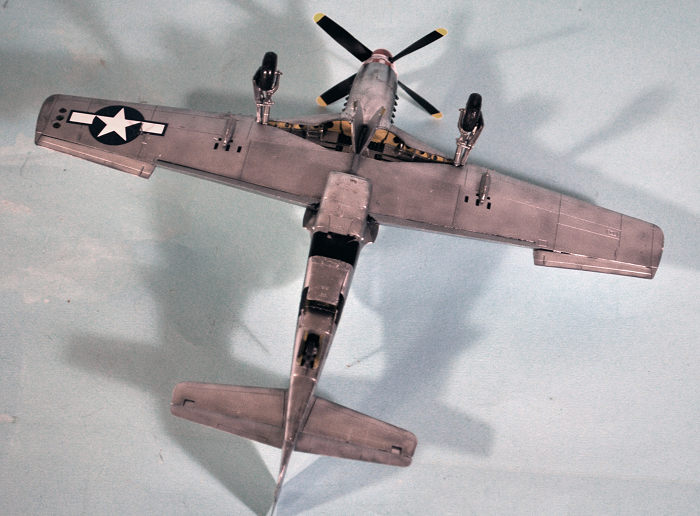 I painted
the nose gloss white, then masked the spinner and shot the gloss red stripe. I
set the spinner aside and masked of the fuselage nose, then shot the anit-glare
panel using Gunze H-78 “Olive Drab (s)”, then masked it off. The wing was
painted with Tamiya LP 70 “Gloss Asluminum, thinned 50-50 which gave a
semi-gloss/semi-flat finish. I masked that and shot the rudder and elevators
with Mr Hobby SM-201 “super-fine aluminum”. The ailerons, flaps, fuselage and
tail surfaces were painted with Mr Hobby SM-208 “Duraluminum.” The gas tank area
on the lower wing was painted with SM-204 “Super stainless”. The fuselage panel
below the cockpit was painted with Tamiya LP 11 “Silver”. The panels around the
exhausts were painted with Tamiya LP-20 “Light Gunmetal” as was the radiator
area in the airscoop. All these paint applications were also thinned 50-50. The
Tamiya paints took about 2 hours to dry to where they could be masked over with
low-tack drafting tape; the Mr Hobby paints took 3-4 hours.
I painted
the nose gloss white, then masked the spinner and shot the gloss red stripe. I
set the spinner aside and masked of the fuselage nose, then shot the anit-glare
panel using Gunze H-78 “Olive Drab (s)”, then masked it off. The wing was
painted with Tamiya LP 70 “Gloss Asluminum, thinned 50-50 which gave a
semi-gloss/semi-flat finish. I masked that and shot the rudder and elevators
with Mr Hobby SM-201 “super-fine aluminum”. The ailerons, flaps, fuselage and
tail surfaces were painted with Mr Hobby SM-208 “Duraluminum.” The gas tank area
on the lower wing was painted with SM-204 “Super stainless”. The fuselage panel
below the cockpit was painted with Tamiya LP 11 “Silver”. The panels around the
exhausts were painted with Tamiya LP-20 “Light Gunmetal” as was the radiator
area in the airscoop. All these paint applications were also thinned 50-50. The
Tamiya paints took about 2 hours to dry to where they could be masked over with
low-tack drafting tape; the Mr Hobby paints took 3-4 hours.
The SuperScale decals went down without problem under repeated coats of Microl-Sol.
I assembled the prop and spinner and attached that, attached the main landing gear in position, and set the canopy in the open position.
| CONCLUSIONS |
If you assemble the Eduard P-51D as I have outlined elsewhere, and apply these super mtalizer paints as explained here, creating an NMF P-51D is much easier than with any other paint.
Review kit courtesy of all you book buyers.
13 June 2024
Copyright ModelingMadness.com. All rights reserved. No reproduction in part or in whole without express permission.
If you would like your product reviewed fairly and fairly quickly, please contact the editor or see other details in the Note to Contributors.